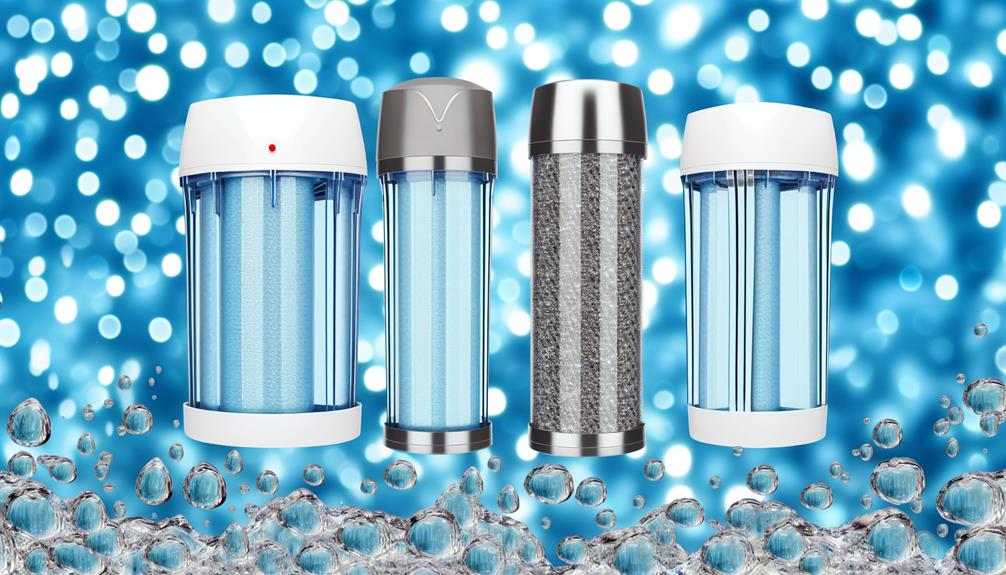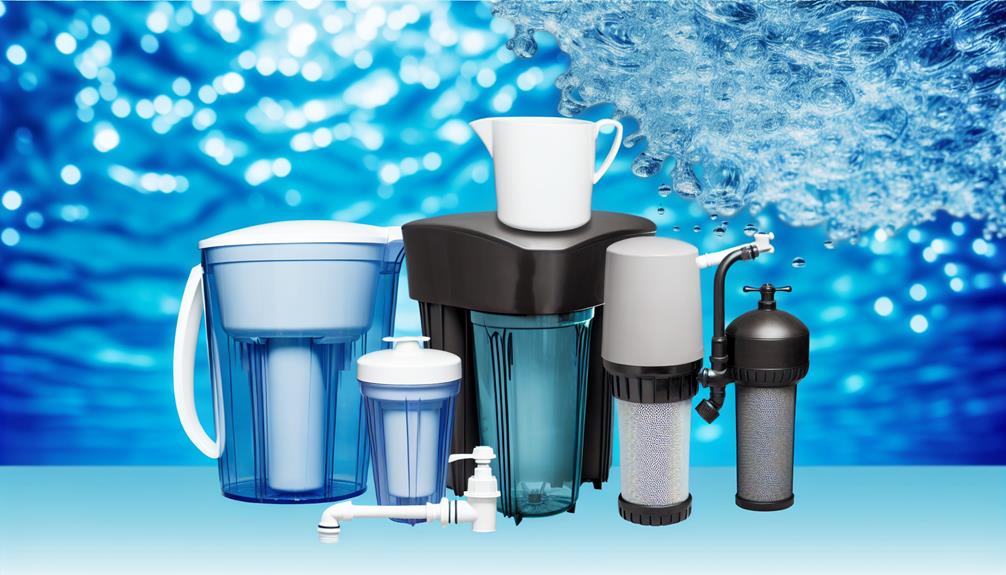You might be surprised to learn that the very plants in your backyard could play a pivotal role in purifying water naturally. While you're aware of boiling and perhaps filtration, experts have pinpointed techniques that harness the intrinsic properties of natural materials—methods that don't just replicate, but often outperform modern technology in terms of sustainability and environmental impact.
From the simplicity of solar disinfection to the complex molecular interactions within charcoal or sand, each method offers unique benefits and challenges. As you seek to ensure your water is clean and safe, consider the array of options that lie in the natural world.
You'll find that understanding these techniques is not just about quenching thirst, but also about appreciating the synergy between nature and human ingenuity.
Boiling for Pathogen Elimination
Boiling water is a time-tested and cost-effective method to ensure you're drinking pathogen-free water, especially when you're dealing with potentially contaminated sources. When you bring water to its boiling point, you're activating one of the most dependable means to purify water and make it safe to drink.
The process is straightforward: you'll need a heat source capable of elevating the water temperature to 212 degrees Fahrenheit or 100 degrees Celsius, the standard boiling point at sea level.
This intense heat is crucial for pathogen elimination, effectively removing bacteria, viruses, and parasites that can cause illness. By boiling water for 1 to 3 minutes, you're ensuring that these harmful microorganisms are neutralized. However, if you're at a higher altitude, you'll need to extend the boiling time since water boils at lower temperatures there, which may be less effective in disinfecting water.
Once boiled, cover the water and allow it to cool before you consume it. This extra step prevents recontamination and ensures the water remains safe to drink. For well water, which may contain additional compounds, let the water settle after boiling. Then, carefully filter out the clean water, ensuring you've removed contaminants and further secured its purity for consumption.
Solar Disinfection (SODIS)
While boiling water is effective for pathogen elimination, Solar Disinfection (SODIS) offers an alternative purification method that harnesses the power of the sun to make water safe to drink. This low-cost, simple, and sustainable approach is particularly suited for regions with abundant sunlight and minimal resources.
To utilize SODIS, you'll fill clear PET bottles with water—ensuring they're not scratched to maintain effectiveness—and place them in direct sunlight. The UV-A rays combined with increased temperature work effectively at removing harmful microorganisms. After six hours of exposure on a sunny day, or two days if it's cloudy, the treated water meets the safety standards for safe drinking water.
The World Health Organization has endorsed SODIS as a viable water treatment solution. It's crucial, however, to note that SODIS is best suited for clear, non-turbid water. If you're dealing with murky water, pre-filtering to improve water quality is necessary before exposing it to sunlight.
What makes SODIS a standout among water purification methods is its accessibility and ease of use. By leveraging natural elements, you're able to purify water without the need for complex infrastructure or chemicals, making your water safe and preserving the environment.
Charcoal Filtration Basics
Delving into the essentials of water purification, you'll find that charcoal filtration, employing activated charcoal, stands as a highly efficient method for extracting chlorine, pesticides, and various organic compounds, thereby enhancing both the taste and safety of drinking water. The activated carbon at the heart of this system is revered for its porosity, which allows for the absorption of contaminants through a process known as adsorption.
In the charcoal filtration basics, the activated carbon's vast surface area is pivotal in removing particles and impurities from water. This makes it one of the best water filtration methods available, especially when it comes to the cost-effectiveness and natural alignment of the purification process. Water filters that harness charcoal can provide purified water without the need for electricity or chemical additives, which underscores its suitability for sustainable living practices.
When you weigh the methods of water purification, remember that the efficacy of charcoal filtration is contingent upon the quality and preparation of the activated carbon. Regular replacement or regeneration of the charcoal is necessary to maintain optimal performance. By integrating these filtration process insights, you're better equipped to ensure clean water for your daily needs.
Sand and Gravel Filtration
Turning our attention to sand and gravel filtration, we discover an uncomplicated yet effective method to physically eradicate larger particles and sediments from water without the need for chemical intervention. This technique is a cornerstone among methods of water purification, offering a natural, sustainable means to achieve clean and safe water.
As a method of water purification, sand and gravel filtration operates through a straightforward principle: water passes through multiple layers of sand and gravel, which act as a physical barrier, trapping particulate matter. The efficiency of this process makes it a prevalent choice for community water treatment systems – these filters aren't only capable of producing filtered water that's safe for drinking but also require minimal maintenance.
The design of sand and gravel filters is methodical; the granular media is sorted by size and density to ensure optimal filtration. The larger gravel sits at the bottom, supporting layers of finer sand above it. As water flows through these layers, impurities are effectively captured, leaving behind pure water. This method of water purification is especially crucial in regions lacking sophisticated infrastructure, providing a reliable way to access water that's not only palatable but also safe for consumption.
Plant-Based Purification Methods
Exploring plant-based purification methods unveils a range of natural solutions that leverage the filtering and absorbent properties of botanicals to cleanse water effectively. These methods stand out as some of the best water purification options for those seeking sustainable and eco-friendly alternatives.
For instance, using seeds from the Moringa plant offers a significant purification advantage. The proteins in these seeds can bind to impurities, causing them to coagulate and settle, which clarifies the water.
Plant-based filtration systems often incorporate activated charcoal, commonly made from coconut shells, which is adept at removing toxins and improving water taste. Additionally, the roots of vetiver grass are known for their ability to absorb heavy metals and other contaminants, making them a natural choice for water purification.
While these methods offer clean, purified water and align with green practices, they also come with certain disadvantages. The efficiency of plant-based purification methods can vary depending on the contaminants present and the scale of purification required. These natural water purification techniques may not always match the effectiveness of more advanced, engineered systems, especially when dealing with a broad spectrum of pollutants.
Balancing the advantages and disadvantages is crucial when considering plant-based purification methods for your water purification needs.

